Exploring Longboard Grip Tape Designs: A Guide
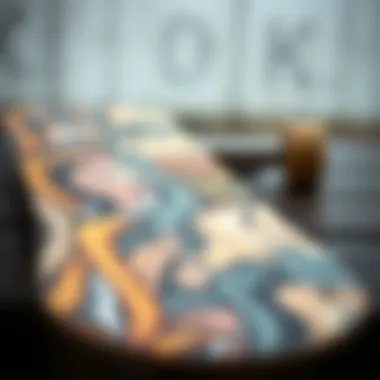
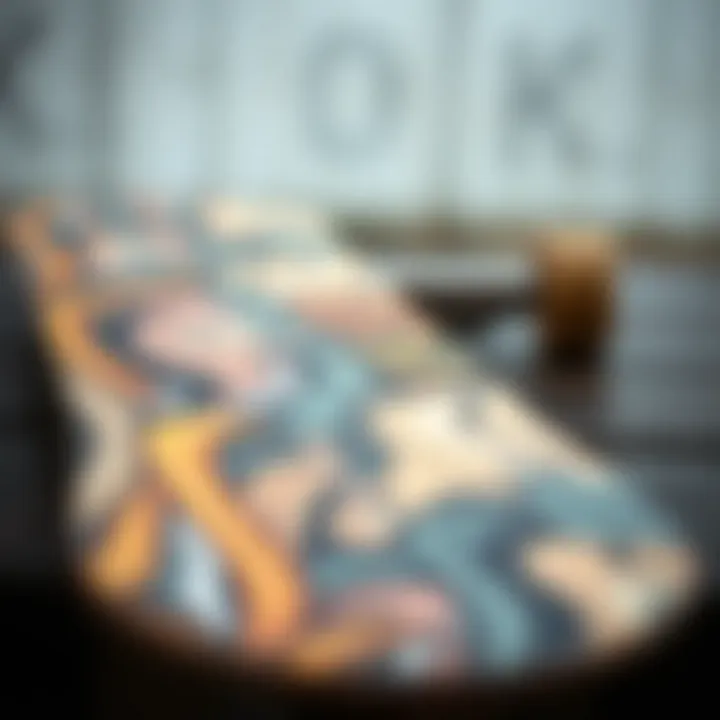
Intro
Longboarding is more than just a pastime. For many, it's a way of life. The way you customize your longboard tells a story; it's an expression of who you are on that board. One of the most crucial aspects of this customization is grip tape. This seemingly overlooked component can significantly impact both style and performance. Understanding grip tape designs, materials, and the innovative ways to personalize them is essential for any rider or retailer.
Grip tape provides the necessary friction for riders to maintain control, especially during daring maneuvers. But, the visual appeal of the grip tape also contributes to the longboard's overall aesthetic. Whether punk, minimalist, or psychedelic, grip tape can reflect the rider's personality. The convergence of function and flair makes exploring these designs all the more vital for enthusiasts.
Through this guide, we will dig into various grip tape designs and their significance. We'll examine how different themes can not only enhance performance but also highlight individuality. From customization options to the materials used, we aim to equip you with knowledge—be it for selecting the right grip tape at a shop or creating your own unique blend at home. So grab your helmets, and let’s roll into the world of longboard grip tape!
Prelims to Longboard Grip Tape
In the realm of longboarding, grip tape often goes unnoticed until it becomes apparent how pivotal it is for both performance and aesthetics. Understanding grip tape creates a foundation for appreciating the deeper elements of longboarding culture. It holds significance beyond mere functionality; it is also a canvas for expression and creativity.
What is Grip Tape?
Grip tape is a rugged adhesive material that is usually applied on the top surface of a longboard or skateboard. Typically made from a high-friction surface that can be sandpaper-like, it provides the necessary traction that keeps the rider's feet securely in place during rides. Imagine cruising down a hill at speed; without reliable grip tape, every turn or maneuver could quickly morph into an unplanned dismount.
The material’s composition may vary but most grip tape utilizes a sturdy backing made from plastic or fabric, coated with silicon carbide to achieve a gritty surface. This combination ensures that skaters can confidently perform tricks or navigate sharp corners without worrying about their feet slipping off. An interesting aspect of modern grip tapes is that they come in various designs, graphics, and colors, appealing to both utility and aesthetics.
The Role of Grip Tape in Longboarding
Grip tape plays a myriad of roles in the longboarding experience. First and foremost, it maximizes safety; a solid grip is essential for maintaining stability and control. When a rider leans into a turn or gains momentum downhill, grip tape helps to ensure that their footing remains secure. However, its influence doesn’t stop there.
Consider the additional dimension of personal style. Many longboarders use grip tape as a means of self-expression. A vibrant or uniquely designed grip tape can set a longboard apart in a crowd. In recent times, the trend has moved towards personalization, with skaters opting for custom designs that reflect their individuality. This emergent trend also symbolizes the player’s connection to the longboarding community.
Moreover, grip tape can affect the overall riding experience. A smoother texture may lessen grip, which could make tricks easier for some skaters who prefer sliding, while a harsher texture enhances stability. It’s a balancing act between personal preference and riding style, where one must consider how various textures and designs impact the performance on diverse terrains.
In summary, grip tape is not just a necessary accessory – it’s an integral part of what makes longboarding both functional and expressive. From safety to design, it shapes every ride down the road, making it essential knowledge for skateboarders, parents, and retailers aiming to deepen their understanding of this vibrant subculture. In the sections to follow, we will delve into the intricate world of grip tape designs, historical influences, and best practices for customization.
Historical Context of Grip Tape Designs
Understanding the historical context of grip tape designs is crucial for appreciating its evolution and significance in the world of longboarding and skateboarding. Grip tape has been a fundamental element that not only enhances the functionality of the board but also expresses the rider’s personal style and identity. This section dives into the journey of grip tape, examining how it has transformed alongside skate culture and influenced design trends over decades.
Evolution of Grip Tape in Skateboarding
Grip tape's origins can be traced back to the early days of skateboarding, which began to take off in the 1960s. Initially, skateboards used flat wooden surfaces with no grip, making it difficult for riders to maintain their footing. The introduction of sandpaper to the board’s top surface was a game-changer. This simple yet effective attachment provided the needed traction, allowing riders to perform tricks without slipping off their boards.
As skateboarding grew, so did grip tape designs. Manufacturers started experimenting with different textures and adhesives to improve performance. By the 1970s, grip tape brands like Jessup began producing materials specifically designed for skateboards. This marked a shift from generic sandpaper to specialized grip tape that offered both durability and aesthetic options.
Today, grip tape is available in a multitude of styles, from clear, transparent sheets to vibrant, artsy designs that can completely change the look of a skateboard. Riders often choose graphics that reflect personal interests or cultural affiliations, making grip tape an essential aspect of self-expression in the sport.
Influence of Skate Culture on Design Trends
Skate culture has always revolved around individuality and expression, and grip tape designs reflect this ethos. In the 1980s, the rise of the punk rock movement and street skating ushered in a bold, rebellious aesthetic that influenced grip tape graphics. Artists and designers began collaborating with skateboard companies, introducing innovative designs that combined art and culture with functionality.
As skateboarding became mainstream, the role of grip tape as a canvas for art gained traction. Companies started to capitalize on this trend by offering limited edition and artist series grip tapes, which appealed to collectors and enthusiasts alike. This shift not only enhanced the visual appeal but also bridged the gap between art and action sports.
Moreover, social media platforms, especially Instagram and TikTok, have played a significant role in shaping current grip tape design trends. Riders share their customized boards and the stories behind their designs, leading to increased demand for unique and original grip tape styles. This interaction between community and creativity underscores the importance of grip tape as more than just a utility; it is a vital part of a visual narrative that connects skateboarders.
"Grip tape is like the canvas of your board; it's where art meets athleticism, showcasing who you are while impacting performance."
In summary, the historical context of grip tape designs reveals a captivating journey reflecting broader trends in skateboarding and skate culture. From its practical beginning with basic sandpaper to the vibrant artistic expressions seen today, grip tape plays a pivotal role in both functionality and the personal expression of riders.
Types of Grip Tape Materials
Understanding the types of grip tape materials is crucial for longboard enthusiasts, as the choice directly impacts not only the aesthetics but also the overall riding experience. Different materials come with unique properties that can enhance or degrade performance, grip, and durability. It's these choices that allow riders to express their style while ensuring maximum safety.
In the world of longboarding, where each rider seeks a perfect blend of performance and personal expression, the grip tape material becomes an unsung hero. As skateboarders glide on street or carve through the mountains, the right material can mean the difference between a smooth ride or a tumble. Thus, choosing wisely involves considering grip, feel, and longevity.
Common Materials Used
When you stroll through a skate shop, you'll notice a variety of grip tape options on display. Some of the most common materials include:
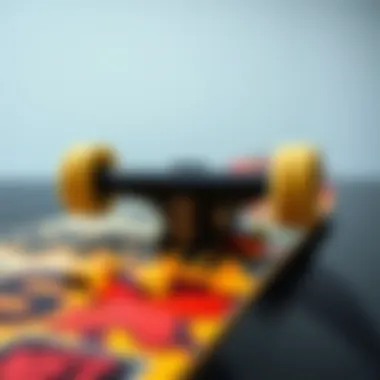
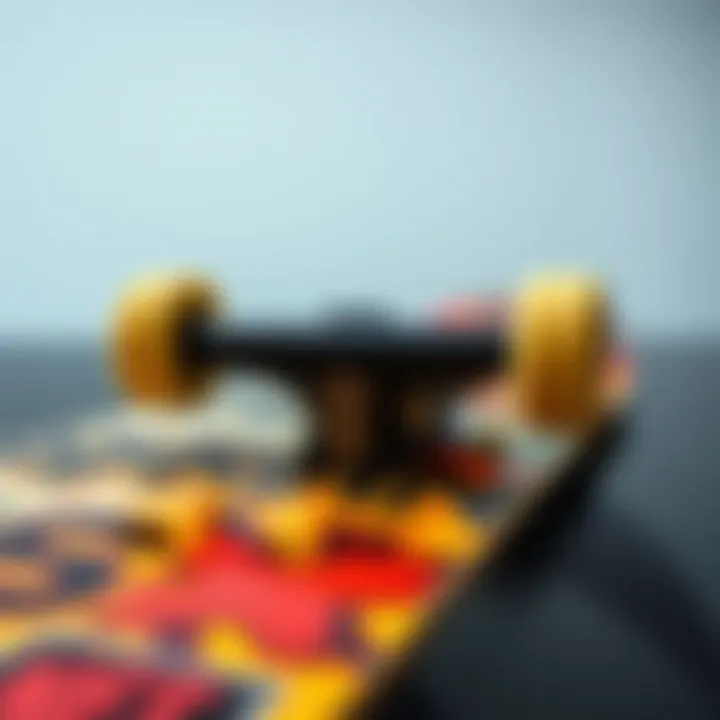
- Sandpaper: This one’s a classic. Traditional sandpaper grip tape offers a rough surface that provides excellent grip. However, it wears down quickly and can be prone to peeling if not adhered properly.
- PVC: A popular choice for many modern boards, PVC grip tape is known for its high durability. It offers a softer feel underfoot while still maintaining strong grip. It’s often used in custom designs due to its printability.
- Polyester: Lightweight yet robust, polyester grip tape brings a balance of durability and flexibility. This type resists moisture, making it suitable for varying weather conditions.
- Grit Types: Different brands might give you varying grit levels—ranging from coarse to fine—affecting how ‘sticky’ the surface feels. A coarser grit provides more traction but can be harsher on shoes over time.
Each of these materials serves a unique purpose for different styles of riding, so understanding their properties will allow riders to tailor their setups more effectively.
Understanding Abrasiveness and Texture
Abrasiveness and texture are two critical factors that play a role in how effective a grip tape will be. Imagine riding down a hill without having enough grip; it could be a recipe for disaster. Hence, assessing these components should be on every rider's checklist.
- Abrasiveness: The abrasive surface ensures you stay connected to your board. A tape that’s too smooth may not provide enough grip, leading to slips—especially during complex tricks or sharp turns. Conversely, a very rough surface may wear down shoes quickly and could even cause discomfort during longer rides.
- Texture: Different textures offer varying degrees of comfort and grip. A textured pattern might enhance the feeling of connection between your foot and the board, contributing to better control. Think of it as the difference between running on smooth concrete versus a gritty path—one offers less traction while the other firmly holds onto your soles.
- Personal Preference: Ultimately, it boils down to personal choice. Some riders might prefer a more grippy surface for tricks, while others might value comfort on lengthy rides. The best way to decide is through testing different types until you find the sweet spot that resonates with your style.
"Choosing the right grip tape can elevate your riding experience, transforming not just how you ride but also how you feel on the board."
Design Elements of Grip Tape
When it comes to longboarding, grip tape serves not only a functional purpose but also acts as a canvas for personal expression and style. The design elements of grip tape are essential because they blend aesthetics with functionality. A well-thought-out design can enhance a rider’s performance by impacting how they interact with their board while simultaneously showcasing their individuality. In this section, we’ll explore the various design elements of grip tape that skateboarders and retailers should consider.
Color Schemes and Patterns
The color schemes and patterns found in grip tape designs are as varied as the skateboarders who use them. Bright colors can catch the eye and make a statement, while muted tones may appeal to those aiming for a more classic look. Additionally, color can impact visibility, making the design more engaging not just for the rider, but for those watching—a crowd favorite at the park, perhaps.
From geometric patterns that bring a modern flair to classic stripes reminiscent of retro skate styles, the possibilities are nearly endless. Some popular patterns include:
- Stripes: A timeless choice that offers simplicity and elegance.
- Camouflage: A design that has gained popularity due to its urban and adventurous feel.
- Floral and Nature-Inspired: A softer choice that can evoke a sense of tranquility and balance.
Establishing a connection between the rider’s personality and their choice of color scheme is key. It's not simply about looking good; colors can also have psychological effects, affecting a rider’s mood and confidence while gliding along.
Graphics and Custom Designs
In a world where personalization reigns, graphics and custom designs bring grip tape to life. Many longboarders opt to create custom artwork that reflects their unique identity. This can range from hand-drawn sketches to bold, digital graphics that reflect influences ranging from street art to pop culture.
Custom designs can enhance the emotional connection a rider has with their board. Some riders might choose imagery related to their favorite that inspires them or slogans that motivate them to keep pushing their limits. Feasible resources for custom artwork can include:
- Local artists and graphic designers
- Online platforms like Etsy, where many craftsmen offer unique designs
- DIY approaches using stencils and spray paints
When engaging in customization, it’s worth considering the materials used. Not all ink or paint will hold up against wear and tear, so it’s essential to choose products that ensure longevity without compromising aesthetics.
Popular Themes in Grip Tape Art
Grip tape art has become a reflection of broader culture trends, often mirroring what is seen in other art forms. Popular themes can include:
- Pop Culture Icons: Characters and symbols from movies, music, and video games are a hit among younger riders.
- Street Art and Graffiti: Bringing urban vibes to the longboarding community, these designs often inspire creativity and rebellion.
- Nature and Environment: As sustainability gains more attention, themes that highlight nature or depict environmental messages resonate with a growing demographic of eco-conscious riders.
Many skateboarders consciously choose themes that convey their values or interests, often creating a dialogue with those who encounter their boards. This can lead to discussions about art, culture, and personal expression on a profoundly relatable level. Ultimately, incorporating these themes can elevate the status of grip tape from mere functional accessory to a true art form.
"Grip tape is more than just a surface; it's your board's personal statement. Your style starts from the ground up."
In summary, the design elements of grip tape speak volumes about a rider’s personality and influence their experience on the board. By paying attention to color schemes, graphics, and popular art themes, riders can enhance not only their performance but their overall joy in the sport.
DIY Grip Tape Customization
In the world of longboarding, grip tape is often seen as a mere accessory, yet it serves a critical dual purpose—providing control while allowing for personal expression. Customizing grip tape transcends the practical use of simply sticking it onto a deck; it transforms the board into an extension of one's identity. DIY grip tape customization marries function with style, allowing riders to carve out a unique space in the longboarding community. By creating personalized designs, longboarders can boost their confidence, stand out from the crowd, and even inspire creativity in others.
Tools and Materials Needed
Before diving into the customization project, it’s essential to gather all necessary tools and materials. Here’s what you’ll typically need:
- Grip tape sheets: Choose those that suit your preferred width and length. Common products include Black Diamond and Jessup.
- Utility knife: A sharp cutting tool is crucial for precision work.
- Ruler or straight edge: To ensure straight cuts and alignments.
- Markers or chalk: For sketching out your design.
- Sandpaper: To smooth edges and surfaces for a clean finish.
- Stencils or templates: Optional but helpful for intricate design work. You can find various stencils online or make one yourself.
- Spray adhesive or glue: Ensures your customized grip tape sticks well to the board and lasts through regular use.
Keeping these items on hand will streamline your customization process and ultimately enhance the quality of your artwork.
Step-by-Step Customization Process

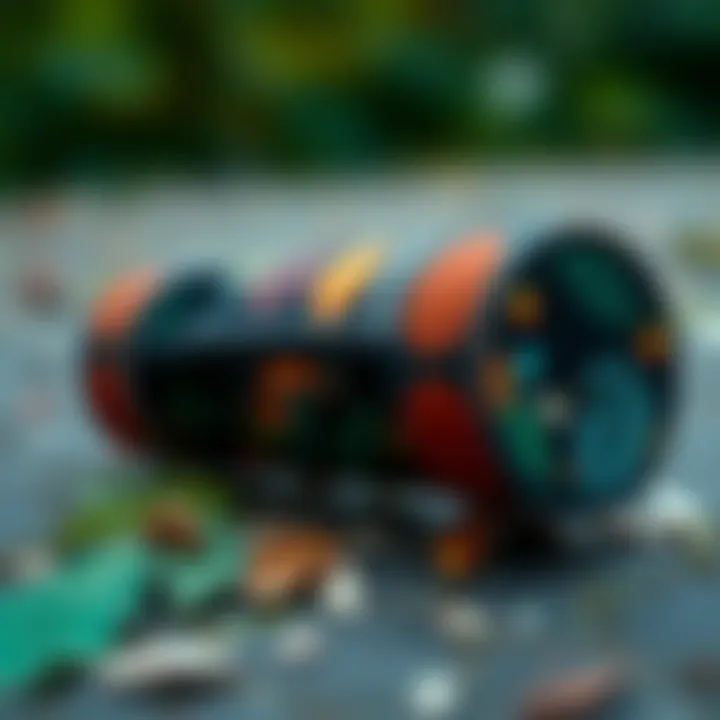
Embarking on your grip tape customization journey involves several key steps, each crucial for achieving a polished outcome. Here’s a straightforward guide to help you through:
- Design Planning: Start with sketching out your design. This can be a simple graphic, a pattern, or even a personal slogan. Use your markers or chalk on a rough surface to visualize your idea.
- Preparing the Surface: Clean your longboard deck thoroughly. Remove any old grip tape; this can be done with heat (a hairdryer can help soften the adhesive) or scraping off the remnants carefully with the utility knife.
- Cutting the Grip Tape: Measure and cut the grip tape to fit your board dimensions. Use your ruler or straight edge to make clean lines. Don’t skimp on precision; this will affect how well everything adheres and looks.
- Applying Your Design: Now, transfer your design onto the grip tape. If you're using stencils, position them and outline them carefully. Use vibrant colors or spray paint if you want a splash of creativity.
- Final Touches: Once your design is dry, stick the grip tape onto your board. Start from one end and slowly work your way to the other, smoothing out any bubbles that might form. Gently use the sandpaper to refine the edges and create a seamless look.
- Finishing Up: Allow your grip tape to set for a while. After everything is secured and dried, give it a final run-through to ensure it meets your satisfaction.
Following these steps, you’ll find that DIY grip tape customization not only improves your skating experience but also imprints your personality onto your ride.
Remember: A well-designed grip tape not only boosts your board's aesthetic appeal but can also positively influence your riding ability by aligning your personality with your performance.
For further reading about the history of grip tape, check out this insightful article on Wikipedia.
In summary, customizing your grip tape may take a bit of time and effort, but it’s a rewarding way to merge functionality and personal expression in longboarding.
Grip Tape and Performance
When it comes to longboarding, the performance of your ride hinges on several factors, none more crucial than the grip tape. It may seem like a minor accessory, yet the right grip tape can make a world of difference in how a longboard handles. Choosing the right design isn't just about aesthetics; it's about creating the ideal synergy between style and safety. A longboarder’s performance often reflects the quality of grip tape they use. Design elements that enhance grip can lead to improved control and increased rider confidence.
How Design Impacts Grip Quality
The design of grip tape significantly influences grip quality, which can be broken down into several elements. First, the texture of the grip tape is paramount. A rougher surface often provides superior traction, which is beneficial during high-speed turns or when performing tricks. For instance, grip tape designed with a coarse texture prevents slipping, ensuring the rider's foot remains firmly planted even under pressure. Conversely, some riders may prefer smoother finishes that allow for easier foot movement, trading off a bit of grip for mobility.
Beyond texture, the pattern on the grip tape plays a role too. Unique designs or shapes can channel debris away from the board, which is particularly helpful in off-road longboarding where loose materials may affect performance. Additionally, aesthetically pleasing graphics can enhance a rider's experience, allowing them to infuse their personal flair into their performance.
- Rider Comfort: A well-designed grip tape not only maintains grip but also minimizes foot fatigue. Some tapes are constructed using materials that absorb shock, preventing discomfort during long rides or hard landings.
- Durability: Quality matters. A grip tape that frays easily will not only diminish visual appeal but also affect grip. Riders should look for tapes that are resistant to wear and maintain their gripping power over time.
"The grip tape you choose can be the difference between an exhilarating ride and a wipeout. It's not just about looking good; it's about riding smart."
The Balance Between Style and Functionality
It's a common dilemma for longboarders: should they prioritize the flashy aesthetics of grip tape over its functional attributes? Striking the right balance is essential. While a colorful, captivating design can express individuality and add flair to the board, functionality must not take a backseat.
A grip tape that is visually stunning but lacks traction can compromise safety and performance. Conversely, a purely utilitarian grip tape may serve its purpose but would leave riders feeling uninspired. Here’s where the art of functional design comes into play. Today, many brands blend style with high-performance materials, resulting in grip tapes that are both visually appealing and exceptionally functional.
When selecting grip tape, consider:
- Personal Expression: Grip tape can showcase a rider’s personality. From intricate designs to bold colors, finding a product that reflects your style is vital.
- Safety Features: Look out for grip tape that combines grip with a safety element—like glow-in-the-dark patterns or reflective designs for night riding.
- Cost vs. Quality: While some high-end grip tapes may cost more, investing in quality can lead to better performance and a longer lifespan, ultimately saving money in the long run.
In balancing these elements, riders can enhance their skateboarding experience without compromising on safety. Ultimately, the right grip tape is one that resonates with a rider’s personal style while ensuring they can perform at their best.
Retail and Trends in Grip Tape Designs
The world of longboarding is not just about the thrill of riding; it’s a complex intersection of art and functionality. Just like any other gear, grip tape has become a vital element that reflects not only performance needs but also individual identity. This section explores the currents steering the retail market and the shifting trends in grip tape designs. Understanding these elements helps skateboarders, parents, and retailers make informed choices in this ever-evolving landscape.
Current Market Trends
In the fast-paced realm of skateboard accessories, understanding market trends can feel like trying to catch smoke with your bare hands. However, a few notable patterns have emerged recently.
- Customization: Many riders are leaning towards personalized grip tape designs, where they can truly express themselves. This shift points to a broader cultural embrace of individualism and creativity amidst the skateboard community.
- Sustainability: As awareness of environmental issues grows, more retailers are offering eco-friendly grip tape options. This includes using materials that are less harmful to the planet, appealing to a new generation of conscientious consumers.
- Collaboration between Brands: Major brands are teaming up with artists or popular influencers from the skate community. This results in limited edition grip tapes that feature unique designs, generating excitement among fans eager to get their hands on exclusive items.
By examining these elements, it’s clear that the grip tape market is evolving beyond mere utility. Today, the aesthetics and values behind grip tape choices carry considerable weight.
Influence of Social Media on Grip Tape Designs
Social media is like a double-edged sword in the world of skateboard designs. Platforms like Instagram and TikTok have become powerhouses for visual creativity, showcasing innovative grip tape designs that riders are eager to share and replicate.
- Viral Trends: A unique design or video can quickly go viral, leading to a spike in demand for similar styles. For instance, a simple post featuring an eye-catching grip tape design can have retailers scrambling to stock similar products or styles.
- Community Interaction: Social media allows for direct conversation between designers and the riders. Feedback on designs can be immediate and often leads to real-time adjustments based on community preferences.
- Influencers and Advertising: Influencers play a significant role in shaping trends. Their endorsements can elevate a specific grip tape brand to new heights, influencing what kids and young adults choose for their setups. Followers often look to these figures for style inspiration, which can lead to a booming market for trendy designs.
Overall, the influence of social media has transformed the way grip tape is marketed and designed. Players in the industry are now more attuned to the voices of the community, thus paving the way for styles that resonate with the core audience.
"The designs you choose speak louder than words. They tell your story, your beliefs, and your unique style to the world."
Environmental Considerations


The significance of environmental considerations in the realm of longboard grip tape cannot be overstated. As skateboarding enters a new era of awareness, the choices concerning grip tape production, usage, and disposal are increasingly pivotal. This section will delve into the necessity for sustainable practices in grip tape production and the importance of responsible disposal methods.
Sustainability in Grip Tape Production
In recent years, the longboarding community has shown a growing interest in the sustainability of products they use. Grip tape, while essential for safety and performance, often contains materials that have a considerable impact on the environment. That's why an understanding of sustainable production methods is vital.
One way manufacturers are adopting sustainability is through the use of eco-friendly materials. Natural rubbers and recycled plastics are becoming more prevalent. This shift not only reduces the carbon footprint but also lessens dependence on virgin materials, encouraging a circular economy. Most grip tapes currently available are made from a blend of synthetic substances, which can take centuries to decompose. Therefore, newer brands, like JESSUP and MOB Grip, are exploring alternatives to mitigate this issue.
Additionally, some companies are seeking certifications that verify their commitment to environmental practices. Recycling programs for grip tape scraps are popping up, allowing skateboarders to return their used tape for repurposing instead of heading to the landfill. Implementing such programs makes a concrete difference in the reduction of waste associated with grip tape.
Recycling and Disposal of Grip Tape
When it comes to disposing of old grip tape, the topic is often brushed aside. However, proper disposal and recycling processes can contribute significantly to the environment. This material is typically not biodegradable, raising concerns about its long-term impact in landfills.
To address this, skate shops and community initiatives have begun to encourage recycling practices. Here are some steps you can take for responsible grip tape disposal:
- Check Local Programs: Some communities have specific recycling programs in place for skateboarding products. Contact local skate shops or municipal waste management to see what's available.
- Repurpose Materials: Think creatively about reusing old grips. They can find a second life as drawer liners, surface protectors for fragile items, or even art projects.
- Educate Your Peers: Share information on social media platforms like Reddit or Facebook, guiding fellow riders on how to dispose of grip tape responsibly.
"We’re not just riding. We’re riding with responsibility. What we put on our boards reflects not only our style, but our care for the planet."
Future of Grip Tape Designs
As we gaze into the horizon of longboard grip tape designs, the conversation shifts towards not just aesthetics, but also the practical implications of innovation. This aspect of grip tape is vital for enthusiasts, manufacturers, and retailers alike. Grasping the future means understanding that designs play a critical role in not just making boards look sharp but also enhancing performance and safety.
In an industry that is constantly evolving, the need to remain relevant and functional is tantamount. Modern skateboarders and longboarders, especially, demand more than visuals; they seek new materials that offer better grip, durability, and resilience against the elements. As we explore this section, the emphasis will be on key innovations on the drawing board and what they might mean for the culture of skating itself.
Innovative Materials and Technologies
Innovations in grip tape are largely driven by the quest for materials that are environmentally friendly while still delivering high performance. For instance, there's a growing interest in using recycled materials, such as discarded plastic bottles and old skateboard decks, to create grip tape. This not only reduces waste but also resonates with a community that values sustainability.
Another evolving area is the use of nanotechnology. This technology can enhance the grip efficiency by manipulating surface textures at a microscopic level. Imagine a grip tape that feels smooth to the touch, but offers unparalleled grip once you step on it.
In addition to materials, technologies in application methods are also on the rise. For instance, a shift towards laser engraving techniques allows for intricate designs without losing grip quality. Such designs can ensure that your personal style shines through without compromising functionality.
"Innovation is the lifeblood of skating culture. As the materials evolve, so do the ways we ride and express ourselves."
Predicted Trends and Developments
Looking ahead, we can expect a few trends to shape the future of grip tape designs. Firstly, advances in customization options are likely to be a major player. Imagine an online platform where riders can upload their designs or select from a pool of community-created graphics that can be directly printed onto grip tape. Such possibilities bring a personal touch that hasn't been fully embraced yet.
Additionally, color-changing or photo-luminescent grip tape might find its way onto the market, making longboarding a more visually dynamic experience. These tapes could change shade based on temperature or light conditions, giving riders a unique aesthetic that reflects their riding environment.
Moreover, as remote learning and digital communication rise, designers might start collaborating with artists globally, leading to a melange of styles that draw from diverse cultures and backgrounds. This melting pot of creativity will likely lead to designs that tell a story or convey deeper meanings, thereby strengthening connections within the community.
Overall, the future of grip tape designs is poised to be innovative, customizable, and tuned into the growing desire for sustainability and aesthetic individuality. With these changes on the horizon, it’s certainly an exciting time for longboarders and design enthusiasts alike.
Epilogue
The conclusion of this exploration delves into the intricate relationship between design and functionality within the realm of longboard grip tape. As we wrap up, it’s clear that grip tape serves more than just a practical purpose; it’s a canvas for creativity and personal expression among skateboarders. The choices made in design can significantly affect not only the aesthetic appeal of a longboard but also its performance in diverse conditions.
One crucial aspect discussed is how the quality of grip tape influences rider safety and control. A well-designed grip tape, with the right texture and material, ensures maximum traction, allowing for confident maneuvers and stability. Here, design is not merely an afterthought but is deeply intertwined with utility.
Summary of Key Insights
In summary, several key insights emerge from our discussion:
- Aesthetic Value: Grip tape designs reflect personal identity and style, allowing riders to showcase their individuality.
- Performance Impact: The tactile surface and design qualities directly correlate to how well skateboarders can grip their boards, affecting their performance.
- Material Choice: Selecting the right materials for grip tape can enhance both durability and functionality.
- Customization Options: Riders have countless opportunities to create custom designs, making grip tape a unique extension of their longboarding experience.
- Trend Influence: Social media platforms and skate culture trends significantly shape the designs and preferences seen today.
These highlights reveal how grip tape designs play a pivotal role in longboarding culture, blending artistry with performance.
The Intersection of Art and Utility
The intersection of art and utility within grip tape design is where the magic truly happens. It’s a space where skateboarders can express themselves while also prioritizing safety and functionality. A rider might choose a vibrant, eye-catching design that resonates with their personality, understanding that this choice does not compromise their control on the board.
Moreover, this dynamic interaction emphasizes the importance of selecting appropriate designs that cater not just to visual appeal but also to performance needs. The graphic choices can influence grip effectiveness, where certain patterns might enhance or detract from the overall feel of the board.
"Good grip tape is like a good friend; it supports you when you need it most."
For those eager to dive deeper into this vibrant community, resources and discussions can be explored on platforms like Reddit or Facebook. Additionally, educational insights can also be found on sites like Britannica and Wikipedia.















